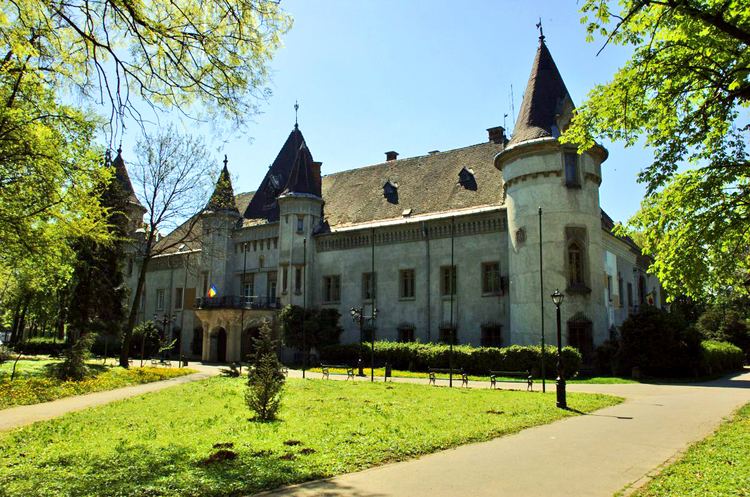Historical region Crișana Settled 1264 Area 102 km² Local time Friday 5:05 AM | Status Municipality Incorporated 1717 Population 21,112 (2011) | |
 | ||
Weather 6°C, Wind SW at 13 km/h, 74% Humidity Neighborhoods Gradina Viilor 2, Eliberarii, Centru, Mihai Viteazul 1, Mihai Viteazul 2, Republicii Points of interest Castelul Károlyi, Muzeu Carei, A román katona emlékműve | ||
Gro karol carei e671 19 rum nien romania 16 4 2016
Carei ([kaˈrej]; Hungarian: Nagykároly, [ˈnɒckaːroj]; German: Grosskarol/Großkarl; Yiddish: קראלי (Krole or Kruli), Turkish: Karolvar) is a city in Satu Mare County, northwestern Romania, near the border with Hungary.
Contents
- Gro karol carei e671 19 rum nien romania 16 4 2016
- Map of Carei 445100 Romania
- Strand carei
- Name
- History
- Tourism
- Demographics
- Natives
- Twin towns Sister cities
- Climate
- References
Map of Carei 445100, Romania
Strand carei
Name
The city was named after an old noble family, the Károlyi. Carei administers one village, Ianculești (Hungarian: Szentjánosmajor).
History
In 1262, in a document, Karul appears as a name of a person, but the etymology of the word can be traced back to the name of a bird karul-karvaly, taken from the ancient Turkish language. The bird that can be found on the coat of arms of the Karolyi family.
King Louis I of Hungary permitted the organization of weekly market gatherings in Carei in 1346, as a result of the military achievements of the Károlyi family. The development of the trade in the region stimulated the wealth and expansion of the town. In the 14th century, the locality was a small settlement with a few streets built around the domain of the noble Károlyi. Wars, plague and famine during the Middle Ages decimated the population and the Károlyi family took steps toward bringing Swabians on their lands. During the 16th and 17th centuries, Carei is often devastated by wars. The town and the surroundings villages suffered the greatest losses during the anti-Habsburg riot, led by Francis II Rákoczi. The first group of colonists came in 1712, opening a century-long period of gradual colonization with Swabians, Slovaks, and Jews. Between 1712-1774,466 Swabian families are settled down in Carei, forming two districts in town. Effects on cultural and social life began to show: in 1727 the Piarist Gymnasium was established, in 1754 the first typography was built, and in 1756 a drugstore was opened.
The town's urban shape is outlined after the great fire that occurred in May 1887, when 250 houses were burnt down. The rebuilding of the houses and the organizing of the streets are done according to the town planning regulations adopted by the town's council.
The light industry began to bloom in the town starting with the 19th century, when the first public institutionswere also created.
In 1887 the Zalău-Carei railway was built and in 1905 the one between Carei and Mateszalka was restored for transportation purposes.
After the collapse of Austria-Hungary at the end of World War I, Carei was part of the territory ceded to Romania in 1920 under the terms of the Treaty of Trianon. In 1940, under the auspices of the Third Reich, which imposed the Second Vienna Award, Hungary retook this territory from Romania. During World War II, however, it was taken back from Hungarian and German troops by Romanian and Soviet forces on 25 October 1944, day which has been celebrated since as the Day of the Romanian Armed Forces.
Although between 1760 and 1920 the town is the capital of the Szatmar county, the industrial development is not significant and it basically preserves its agricultural specific until about 1960. In 1926 it was attached to Sălaj county. After 1945, Carei is included in the Baia Mare district, and after 1968, along with the administrative-territorial reorganization of the country, it returns to Satu Mare county.
Until World War II, the industry of the town consisted of mills, the Oil Factory Ardealul, a station for collecting and fermenting tobacco and some small workshops. During the Communist period, Carei gradually turned into an industrial town.
Tourism
The most important historical building in the city is the Károlyi castle. Built originally as a fortress around the 14th century, it was converted to a castle in 1794, undergoing further transformations during the 19th century. The manor is surrounded by a dendrological park covering a surface of about 30 acres (12 ha) and containing a great variety of species of trees and plants.
Demographics
According to the 2011 census, of those for whom data are available, 54.8% are Hungarians, 40.4% Romanians, 2.4% Germans and 2.3% Roma.
Natives
Twin towns – Sister cities
Carei is twinned with:
Climate
Carei has a continental climate, characterized by hot dry summers and cold winters. As the city is in the far north of the country, winter is colder than the national average. The average annual temperature is 9.6 °C (49 °F).
